Stains come in different forms and colors. The more colorful and conspicuous the stain, the faster you have to act to remove it.
Most stains can be removed quickly and efficiently if you don’t let them dry. The pigment in the stain sets, and the fabrics absorb it, which means that you might have a shadow of the stain left behind no matter how many times you wash it.
To remove stains fast, you need to act quickly. Always soak fresh stains in cold water because hot water cooks protein and enzyme stains and makes them harder to remove. Blot the stain but don’t rub it. And if at first, the stain doesn’t come off, keep working on it until it’s gone. Finally, always keep your house stocked with white vinegar, baking soda, and enzyme stain removers.
With the right tools and materials, you can beat any stain on just about any surface. Read more to find out how to remove stains fast and keep your house spotless clean without putting in long hours.
How To Remove Stains Fast
If you want to be ready for just about any stain that comes your way, you need to know that what works on one stain will not work on another.
Grass stains, for example, are notoriously persistent and resistant to the strongest laundry detergents and stain removers. The same can be said about blood stains, tea stains, and red wine stains. Each one of these stains requires a different approach.
The reason for that is that the source of the stain is different. Tea, for example, has tannin, which is an organic compound that easily latches onto fabrics or even hard surfaces.
Blood and sweat stains, on the other hand, have enzymes and proteins that quickly bind with the clothes, and once dry, they become a permanent fixture. So you need to identify the stain first and then proceed to treat it.
The following are the top 9 types of stains that you’re bound to encounter in your daily life. Whether you lead an active lifestyle with plenty of time spent outdoors, you stay home most of the time, and whether you have proactive kids and pets or not. Stains will find you, and you’d better be ready for them.
Red Wine
If you or someone in your household is a fan of red wine, then you know firsthand how difficult those dry red wine stains can be. They look similar to blood stains, so you need to make sure you’re dealing with a red wine stain. The materials and approaches for treating both of these stains are different.
One way to identify the crimson stain is to give it the smell test. Red wine smells sweet and fruity or a little acidic, depending on the type of the wine. Blood stains smell acrid and usually have a thick texture. You’ll need table salt, baking soda, and boiling water.
- Spread the fabric on a table and sprinkle baking soda on the fresh wine stain. Allow 10 minutes for the baking soda to absorb the red wine. If the stain is dry, skip to the next step.
- Place the fabric on a large bowl with the wine stain up.
- Cover the stain with salt and leave it for five minutes.
- Boil water in a kettle and pour it on the stain from 8 inches up. This will give the hot water enough force to penetrate the fabric and flush out the dry wine stain.
- Drop the clothes in the washer and wash them at high temperatures.
Oil Stains
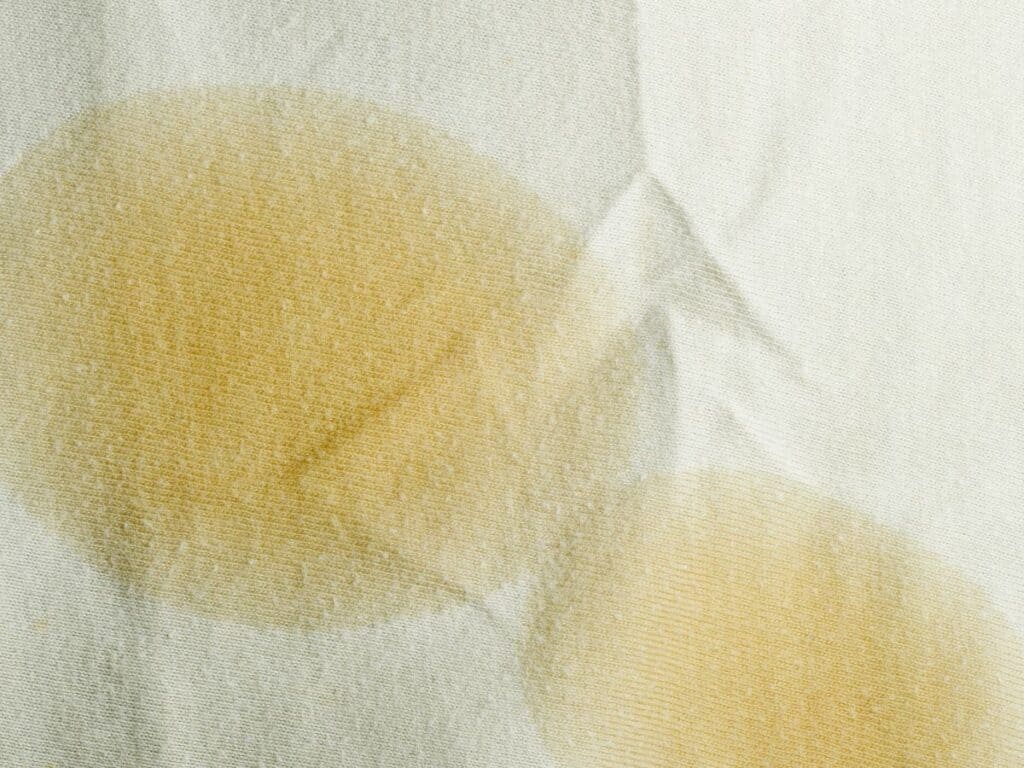
Oil stains come from different sources. Greasy food will often leave oil stains on clothes. Our bodies produce oil to keep our skin supple and healthy. That oil is often flushed out when we sweat, which stains the clothes we wear and any surface we come in contact with. While sweat stains on clothes easily come off in the washer, dry and accumulated stains in pillowcases require pre-wash treatment.
You can smother the oil stains with concentrated liquid detergent and leave them for 5 minutes before rinsing off the detergent and putting the clothes to wash. Another way is to use white chalk. This works even for non-washable fabrics or pillows covered with dry sweat stains.
- Spread the fabric and rub the stain with white chalk.
- Let it sit for 5 minutes as the chalk breaks down and binds with the enzymes in the oil.
- Brush off the white chalk.
- Wash the garment in the washer with an enzyme laundry detergent.
I wrote an article on the best detergents for restaurant workers that may interest you to check out if you are in contact with oil frequently.
Grass Stains
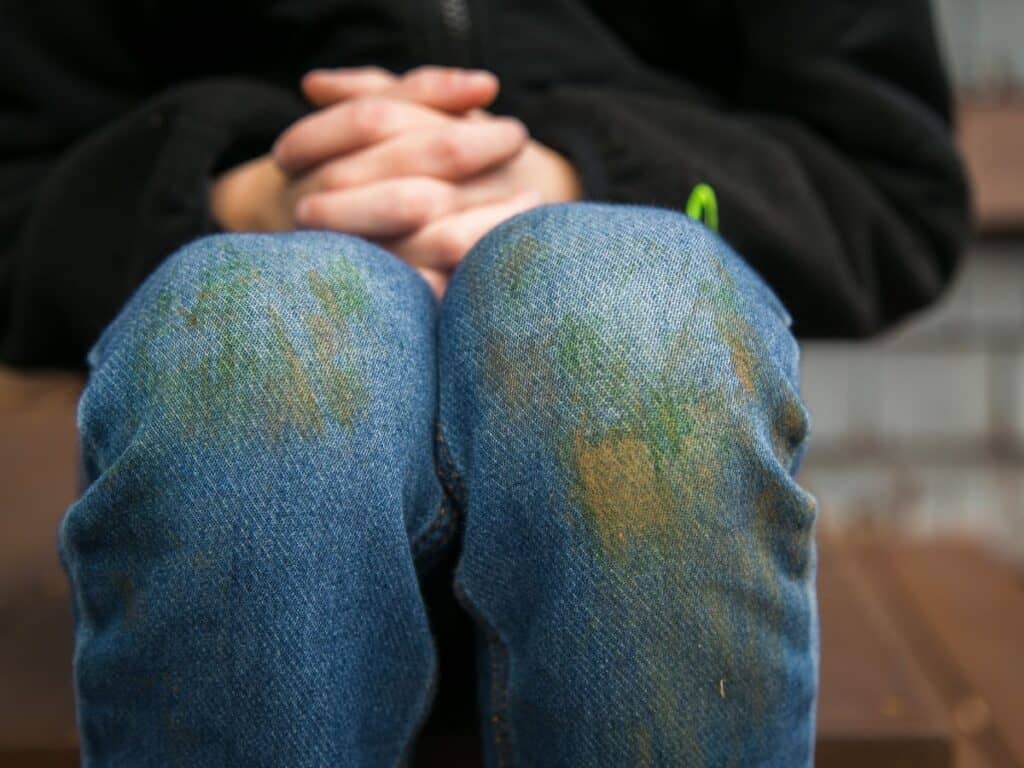
Grass stains go hand in hand with the outdoors and children. A fun game of soccer or even kicking the ball out in the yard always results in green stains all over the shirt and shorts.
It’s an inevitable consequence that you have to be prepared for. But it’s not as tough of a stain as you think it is.
Grass stains can be easily removed with toothpaste and an old toothbrush.
- Smother the grass stain with white toothpaste.
- Dip the toothbrush in water and brush the stain.
- Wash the toothbrush and use it to remove the excess toothpaste foam and examine the stain.
- Repeat until the stain is gone.
- Rinse the toothpaste thoroughly under running water.
- Wash at regular water temperature.
Blood Stains
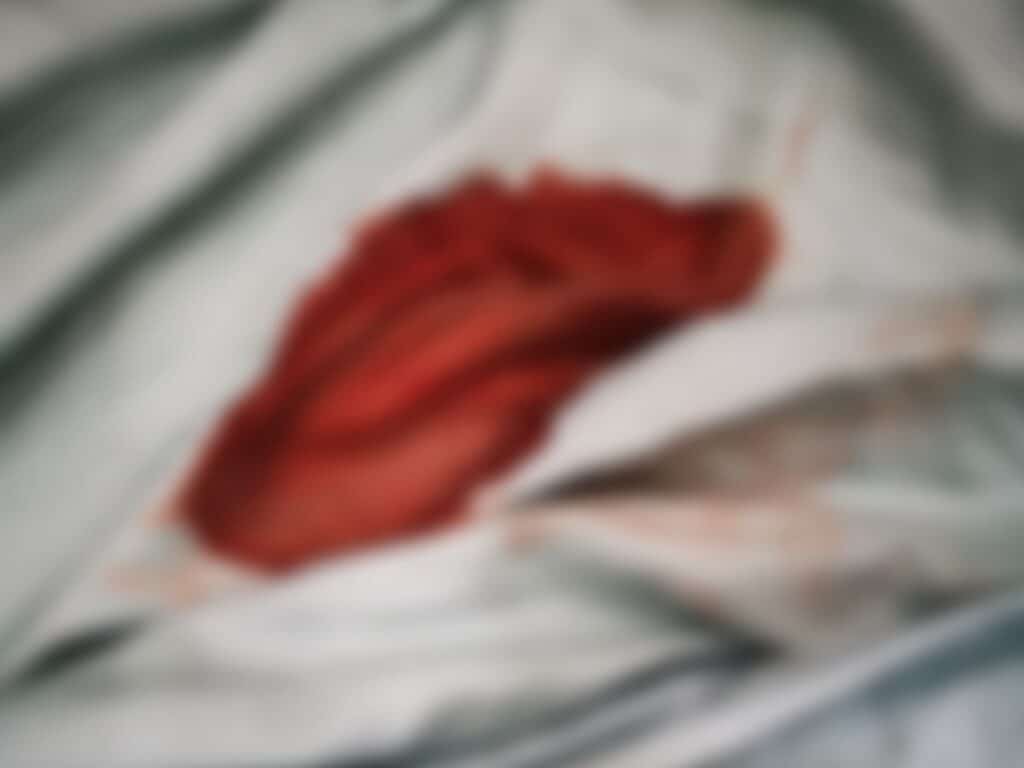
Cuts and injuries happen all the time. Fabrics tend to soak up blood, and the stains are hard to remove in the washer.
You need to treat them before the blood dries. There are three ways you can get rid of blood stains.
The first involves hydrogen peroxide. You can get it online or in a drugstore. Make sure it’s 3 percent concentrated. If you don’t have hydrogen peroxide, then regular soda would do. The third way is to use table salt.
Pour a few drops of hydrogen peroxide on the blood stain. The hydrogen peroxide interacts with the blood, breaks it down, and binds with the enzymes.
Let it sit for 5 minutes, then use the back of a butter knife to scrub off the stain. Rinse in cold water, then wash it in the washer at normal temperatures.
If you’re using table salt, then follow the above steps. The table salt needs about 10 minutes to absorb the blood. Scrub it off, reapply salt if you have to, then rinse in cold water and wash. As for soda, you’ll need to soak the blood stain overnight.
Use transparent soda such as Sprite since Pepsi or Coca-Cola would stain the fabric. Rub off the stain in the morning under cold water and wash normally.
More on removing blood from clothes here, and from concrete here.
Lipstick Stains
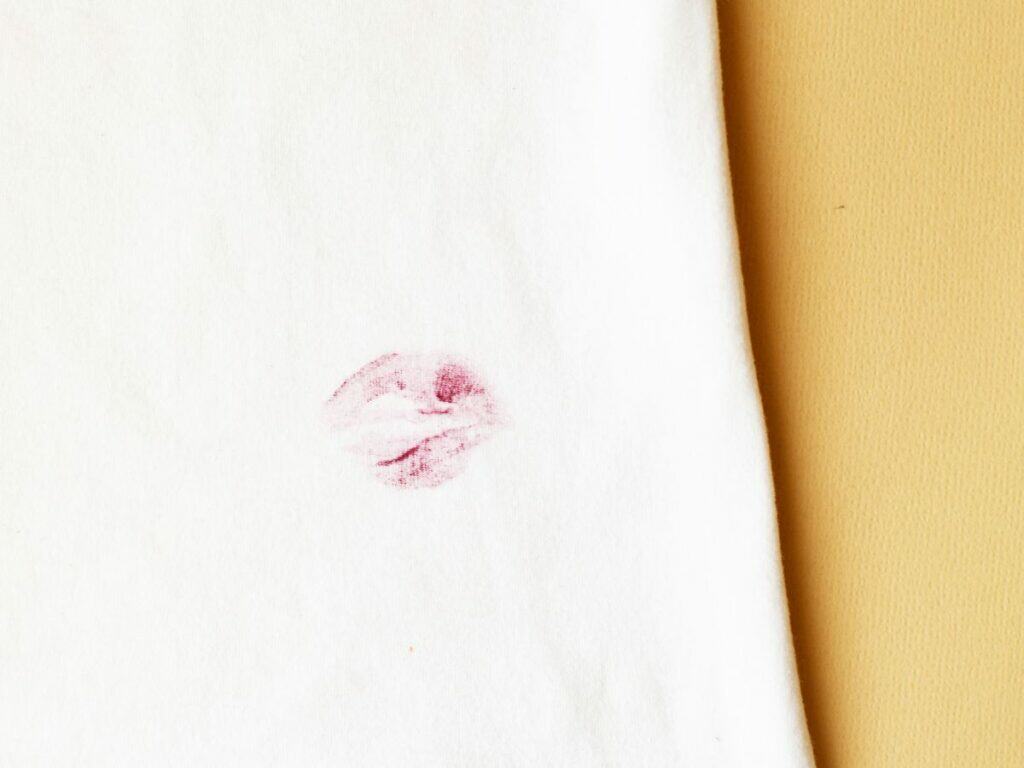
Lipstick is rich in oil, enzymes, and chemicals that stain quickly. You’ll need a powerful detergent to get rid of these types of stains. If the stained fabric is non-washable such as velvet or cashmere, then take it to the dry cleaner and let the professionals handle it. But if you’re dealing with cotton or linen, then follow these steps.
- Scrape off the excess lipstick with the back of a butter knife.
- Spread paper towels on a table.
- Place the stained garment on the paper towels with the stained side down.
- Pour a few drops of dish soap on the back of the stains. That way, the lipstick will not get absorbed by the fabric when it breaks down.
- Flip the garment to the other side where the stains are facing up and scrub them off with an old toothbrush.
- Put the garment in the washer without rinsing and set the machine to a gentle cycle.
- Repeat steps 3 to 6 until the lipstick stain is gone.
More on how to remove lipstick stains here.
Collar Stains
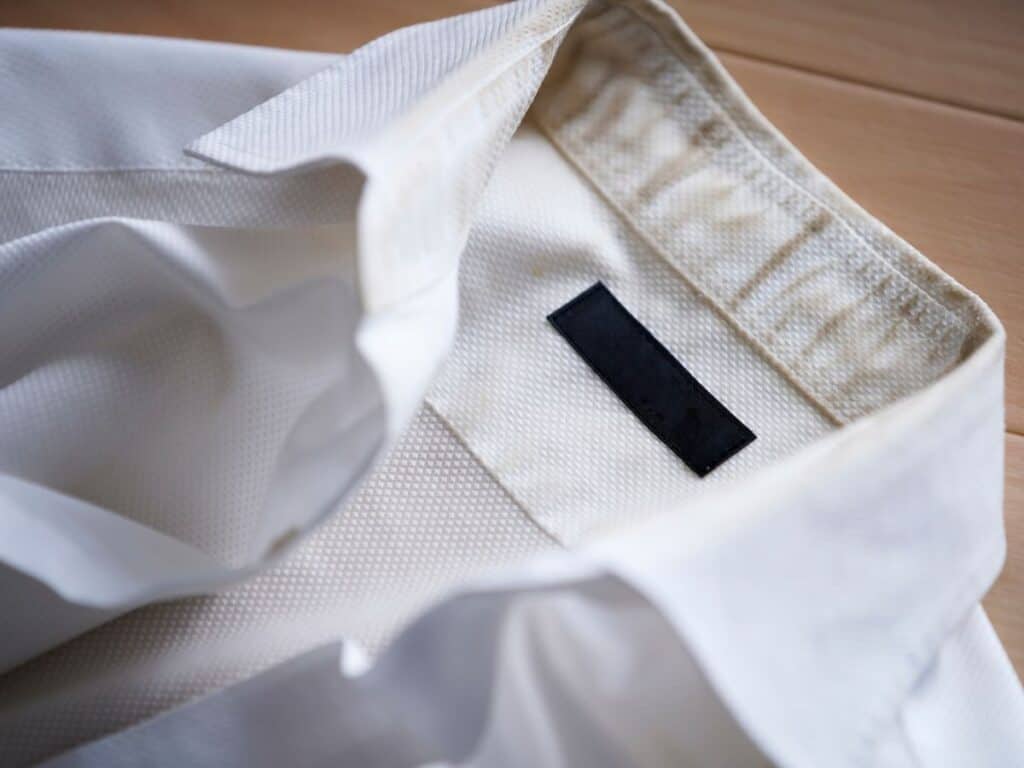
Sweat and dirt rings on the collar are the last thing you want to see when you’re ready to go out. These stubborn stains resist laundry detergents and can survive many wash cycles. However, it’s easy to get rid of them quickly by treating the collar stains with shampoo. It works best if you treat the collar right when the sweat stain is not dry. Choose a shampoo for oily hair to break down the sweat stain quickly.
- Pour a few drops of shampoo on the collar ring.
- Rub the shampoo in with your finger to push it into the fabric.
- Set it aside for 30 minutes.
- Put the collar under the tap and rub the excess shampoo out of it.
- Now add the garment to the laundry load and wash it in a regular cycle.
Tea Stains
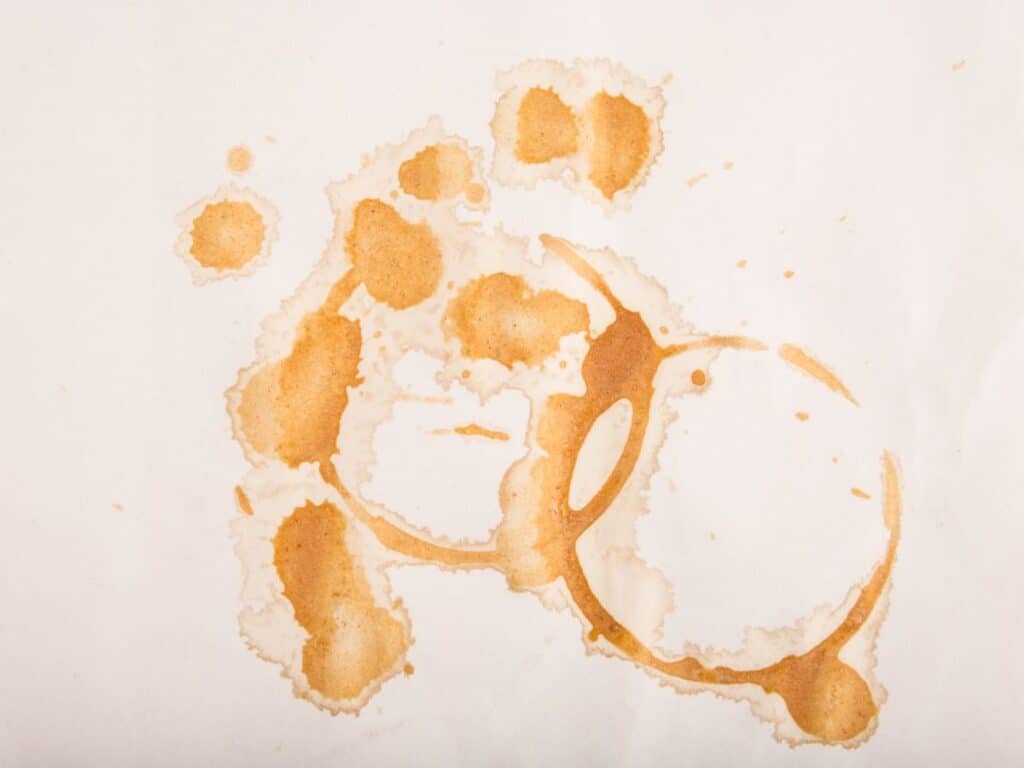
Tea stains are some of the stains that require cold water treatment. The sooner you treat the stain, the easier and faster it comes off.
You’ll need a regular laundry detergent to work it into the stain. As usual, work on the back of the stain to put it out and avoid pushing it into the fabric. Here’s how to do it in easy steps.
- Place the garment on a bowl or a kettle in the sink with the stain facing down.
- Run the cold water tap directly on the back of the stain. The force of the water will flush the tea stain out of the fabric without spreading it.
- Turn the garment to the other side with the stain facing up.
- Add a few drops of laundry detergent to the stain and rub it in with your finger.
- Let it sit for about 10 minutes.
- Rub the stain off under cold water and put the garment to wash in a regular cycle.
- Dry tea stains would require soaking in cold water for about 4 hours, then follow steps 4 to 6.
Grease Stains
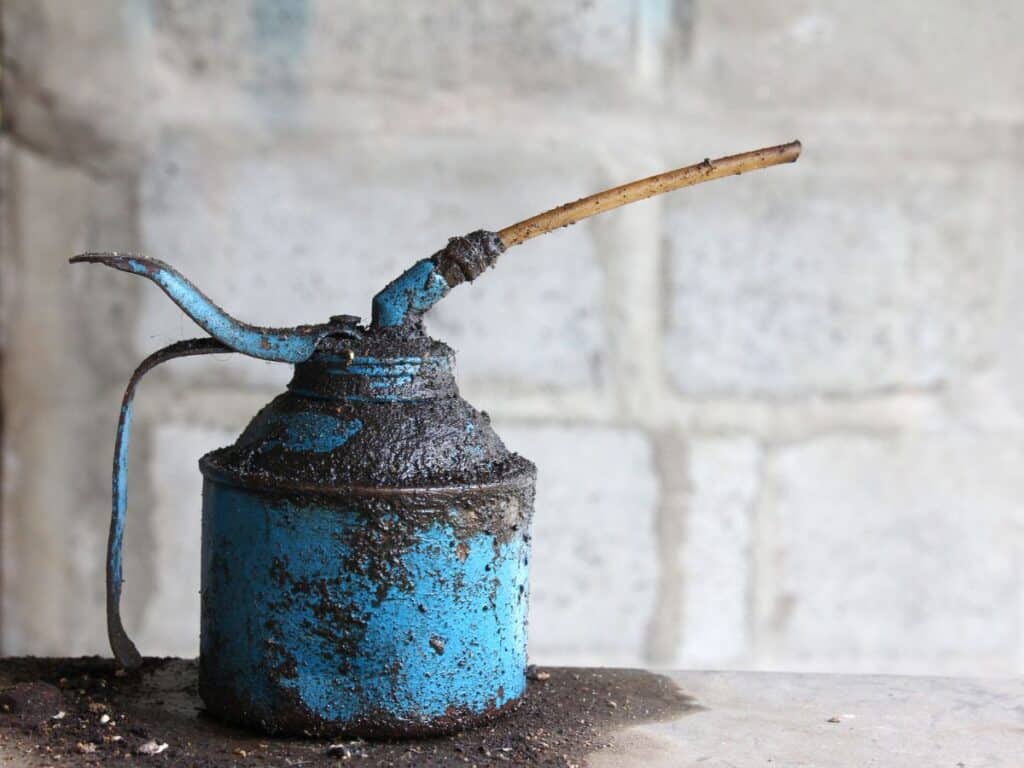
Grease stains are hard to remove with laundry detergents. They also resist stain removers, and nothing seems to break them down.
However, you can quickly remove grease stains with cornstarch. It absorbs the grease within 10 minutes. Scrub the excess material off with a butter knife and put the garment to wash in high-temperature water.
If you prefer a quicker fix for the grease stains, spray them with WD-40. This is the same product you use to lubricate squeaky hinges.
Spray the grease stain with WD-40 and leave it for 30 minutes. Rinse the lubricant off, then soak the stains with dish soap and laundry detergent for another 30 minutes. Rinse off thoroughly, then wash the clothes at normal temperature.
Ink Stains
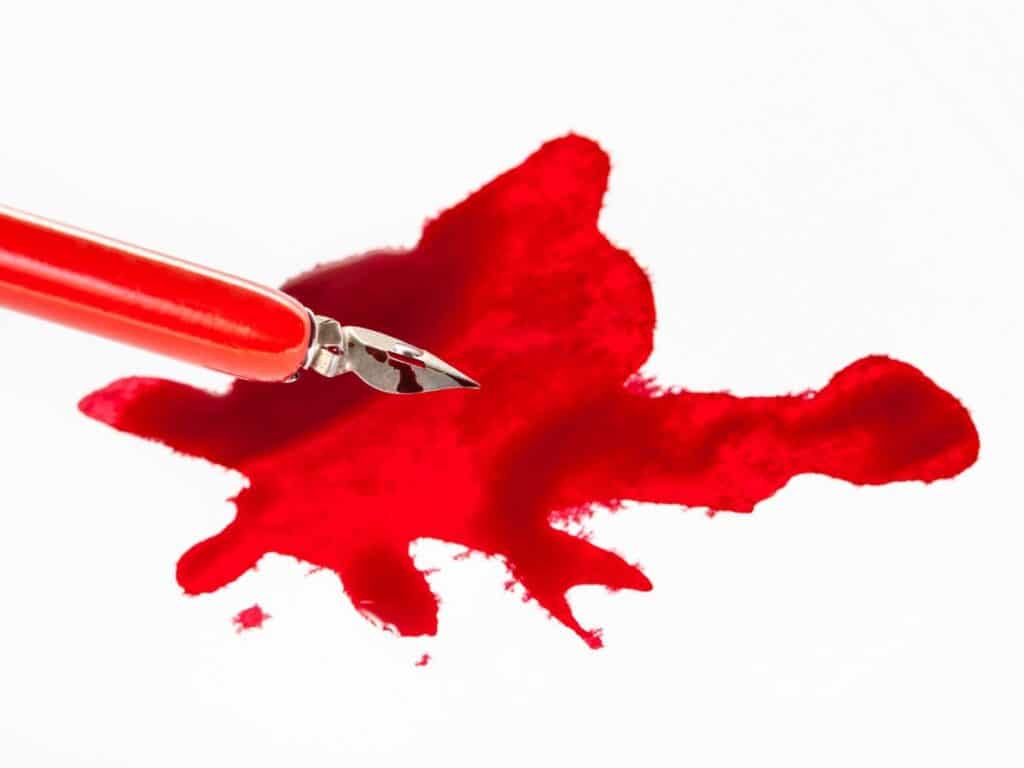
Ballpoint pens have made ink stains a thing of the past. Fountain pens are no longer fashionable, and if you use your computer for work, chances are you don’t touch a pen that often. Still, ink stains continue to persist on children’s clothes.
You’ll need rubbing alcohol to treat small ink stains. If the stain is large, soak it in water for an hour, then treat it with rubbing alcohol. Use a paper towel to blot the ink stain, then wash it in high-temperature water.
Felt tip stains are more difficult. Soak the stain in cold water for an hour. Then soak it for another hour in hot water with some ammonia and laundry detergent mixed in. Rinse the stain, then put it in the washer.
Tips for Removing Stains Fast
Here are a few tips to help you get rid of stains fast.
- Act quickly as soon as you see the stain. The sooner you treat the stain before it dries, the easier it is to remove it.
- Sweat, grease, blood, and oil stains contain enzymes that require soaking before treating them.
- Baking soda and white vinegar work on many stains. But you need to make sure the fabric isn’t damaged by either of them.
- Test the cleaning solution on a hidden part of the fabric before applying it.
- All stains come off, even dried ones. You just need to keep working on them.
Conclusion
Stains are part of life. And you need to know how to treat each type of stain and get rid of it quickly. Keep things like rubbing alcohol, white vinegar, baking soda, ammonia, and cornstarch around the house to use for removing all types of stains fast.
Next, you can check out how to fix discolored clothes. I wrote a very comprehensive guide that I think you may like.

I’m an expert wardrobe organizer and a bit of a clean freak. I created this website and its YouTube channel to share practical guides about laundry and organizing. My teachings have been featured in multiple large news publications, and I’ve self-published two wardrobe organizing books and an entire course on the subject.
